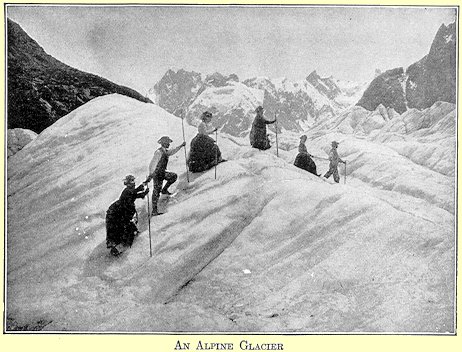Melting Glaciers
Today, we follow melting glaciers. The University of Houston's College of Engineering presents this series about the machines that make our civilization run, and the people whose ingenuity created them.
Years ago, when I taught at Washington State University in Eastern Washington, our anthropology faculty was deeply involved with reclamation archaeology. Dams were rising along the great western rivers, and huge tracts of historic native land were being flooded. Anthropologists went into those regions to find what artifacts they could before the ground was under water.
Much of that has been going on around the world, but now such efforts take a surprising new form. An early signal was the appearance of the Tyrolean Iceman in 1991. A couple, climbing high in the Ötztal Alps, found the remains of a man, newly exposed in the melting ice. He'd been perfectly frozen and preserved for over five thousand years.
Writer Kevin Krajick tells a similar story in a 2002 Science magazine. A hiker, high in the mountains of the Yukon, is suddenly hit by a bathroom stench. He follows his nose and discovers that a melting ice bank has uncovered a huge tract of fresh caribou dung. This is an area where caribou haven't been seen for generations. The seemingly fresh dung has to be very old.
Anthropologists have entered that area and found preserved animal and bird life going back eighty-three hundred years. Mixed in among the remains are ancient human artifacts. Suddenly a huge historical record opens up.
Some ten thousand years ago, the earth warmed, the glaciers retreated, and everything changed. All around the world, people responded to that warmth in various ways. In the southern latitudes, they invented agriculture. But in the north, they began traveling across retreating glaciers -- to hunt and to trade goods.
We are now, once more, entering a time of global warming. Just what part of that warming is the result of what we're doing to the environment is still unclear, but we are warming. What we've discovered in the Tyrol and the Yukon, we now realize, is occurring all across northern Europe and America.
We need to undertake a new of kind of reclamation archaeology. Like any such archaeology, it has to be done quickly. The contents of these new sites, once opened to fresh air, decay rapidly. An anthropologist at the University of Alaska says, woefully, "We should be out there with ten helicopters every summer."
One team of Alaskan anthropologists is presently studying glacial maps and data on melting and then flying into promising regions. During the summer of 2001 alone, they found thirty-six sites -- all rich in remains -- near Wrangell, Alaska.
Krajick's article ends by quoting one of those investigators. He mentions a Colorado hotel that advertises, "Pure water directly from Arapahoe Glacier." He thinks about the wealth of organic matter being revealed as the glaciers melt, and says that he winces when he thinks about drinking that "pure" glacial water.
I'm John Lienhard, at the University of Houston, where we're interested in the way inventive minds work.
(Theme music)
Krajick, K., Melting Glaciers Release Ancient Relics. Science, Vol. 296, 19 April, 2002, pp. 454-456.

From the 1923 Wonder Book of Knowledge.